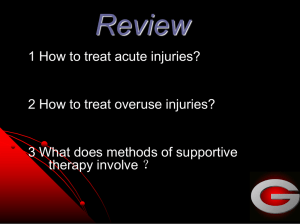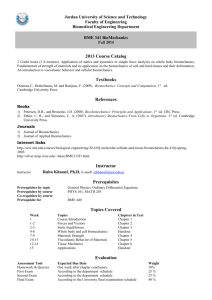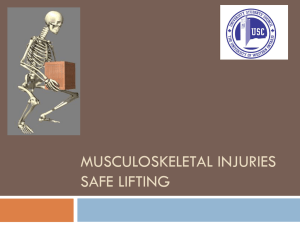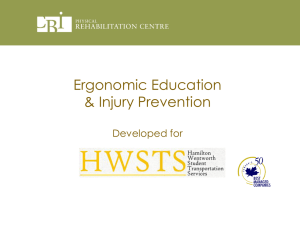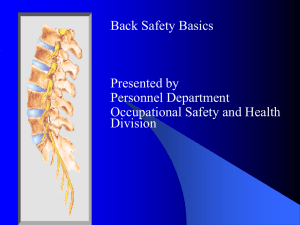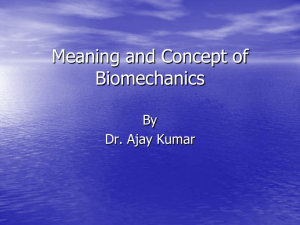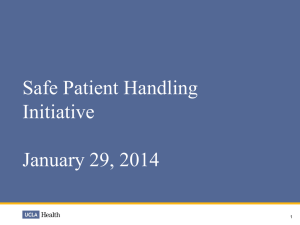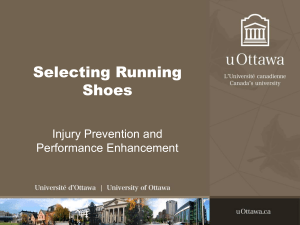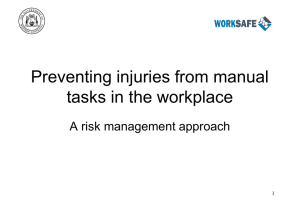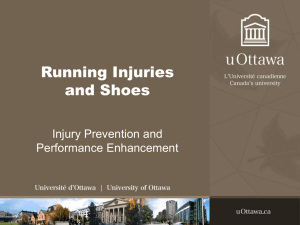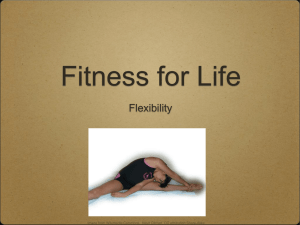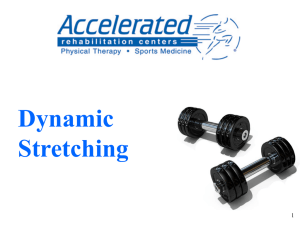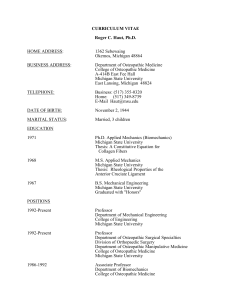Biomechanics - Knox County Government
advertisement
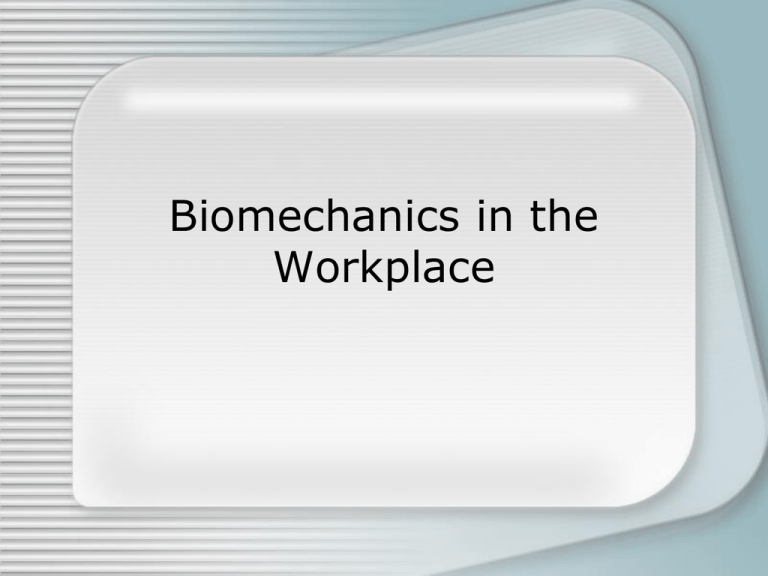
Biomechanics in the Workplace What Is Biomechanics? • Definition: “The study of forces acting on and generated within a body and the effects of these forces on the tissues, fluid, or materials used for the diagnosis, treatment, or research purposes.” • Biomechanics is a large field that combines physics, calculus, anatomy, and physiology for the study of human movement Why is it Important? • Fixing “problem jobs” reduces musculoskeletal disorders (MSD) and injury related costs. • Understanding of human movement facilitates better teaching, successful coaching, more observant therapy, knowledgeable exercise prescription, and new research ideas. Musculoskeletal Disorders (MSD) • Work related injuries • Typically develop over time due to repeated stresses tendons, muscles, and nerves • Common injuries: Neck and back pain, carpal tunnel syndrome, tendonitis Causes for MSD • 1. Repetition: Using the same movement over and over for a extended period of time. • 2. Force: Using a lot of force for pushing, lifting, or pulling heavy objects. • 3. Work rate: Continuous labor, especially if proper recovery time is not met. • 4. Awkward Positions: Movements that work muscles and joints past acceptable movement angles. Reducing the Risks of MSD • • • • • • • Frequent stretching Using proper movements Good overall health Staying hydrated Rest Fitness A good attitude Biomechanics in the Workplace • Working postures can greatly influence strain on the lower back. Both mobile and sedentary styles of work present injury risk. • Frequent bending, twisting, lifting, pulling, and pushing are some of the risk factors for back injuries, the most common injury in the workplace. Biomechanics in the Office A presentation on: Staying safe at work Biomechanics in the Office: Sitting Posture • When sitting down at a desk the worst possible strain on the spine is a slouched liked position. • Higher seating height can decrease the compressive force on the spine. Try to maintain your back close to a 90° angle in relation with your thigh. • Generally several short breaks throughout the day to stand and move will greatly reduce muscle fatigue Biomechanics in the Office: Proper typing Posture • 1. Place keyboard upright so your wrists are in a neutral position when your fingers are paced on the keys. • 2. Avoid neck fatigue and headaches by adjusting your monitor slightly below eye level and approximately one arm length from your body. • 3. Avoid holding the mouse tightly • 4. Use a document holder to position paperwork next to your monitor. Biomechanics in the Office: Standing Posture • While Standing or in motion, maintain an erect but comfortable spinal position. • Strain from standing can be greatly reduced by using floor mats, using a foot rest, making sure the work area has adequate foot clearance, and wearing proper shoes. Often sturdy, comfortable soles help with posture • One of the most important factors for both standing and sitting is to avoid prolonged static postures. Most common workrelated injuries Carpal Tunnel Syndrome (CTS) • A pinched nerve in the wrist that can cause serious long term injury. • The tendons in the wrist begin to swell which puts pressure on the median nerve. • Signs of CTS are most commonly a numbing or tingling pain in the hand and fingers. Muscle Strain • Majority of strains are caused by overstretching in which small tears occur in the muscle. • Can be very minor or severe, such as a torn tendon in the neck, back, or shoulder. • Some common symptoms: Pain and tenderness when moving, Swelling and brusing, limited muscle movement, a bulge or deformity underneath the skin. • Recovery time varies depending on a person’s age, health, and severity of injury. Biomechanics in the Field: Lifting • Before attempting to lift ask yourself: • • • • • 1. 2. 3. 4. 5. Can I lift this alone? Is the load too big or too awkward? Does the load have handles? Could the contents of this load shift? What objects are blocking the load? Biomechanics in the field: General lifting techniques • The weight of the objects being lifted should be lowered as lift frequency, lift distance, and object size increase. • Proper Lifting Technique: • 1. Maintain a neutral spine • 2. Lift with lower body with a controlled speed • 3. Keep the load close to the pelvis. • 4. Avoid leaning side to side, or front to back Importance of Stretching • Most jobs usually involve long hours each day and repetitive motions. • Stretching reduces the risks of injuries in the neck, arm, wrist, back, hand, and legs • For the millions of office employees it is vital that you take a 5 minute break every 30 minutes to avoid the possibility of injury at work. Need other reasons to stretch? • Stretching increases flexibility. Flexible muscles can improve your daily performance. Tasks such as lifting packages, bending to tie your shoes or hurrying to catch a bus become easier and less tiring. • Stretching improves range of motion of your joints. Good range of motion keeps you in better balance, which will help keep you mobile and less prone to falls — and the related injuries — especially as you age. • Stretching improves circulation. Stretching increases blood flow to your muscles. Improved circulation can speed recovery after muscle injuries. • Stretching can relieve stress. Stretching relaxes the tense muscles that often accompany stress. Stretching at work Additional stretches

